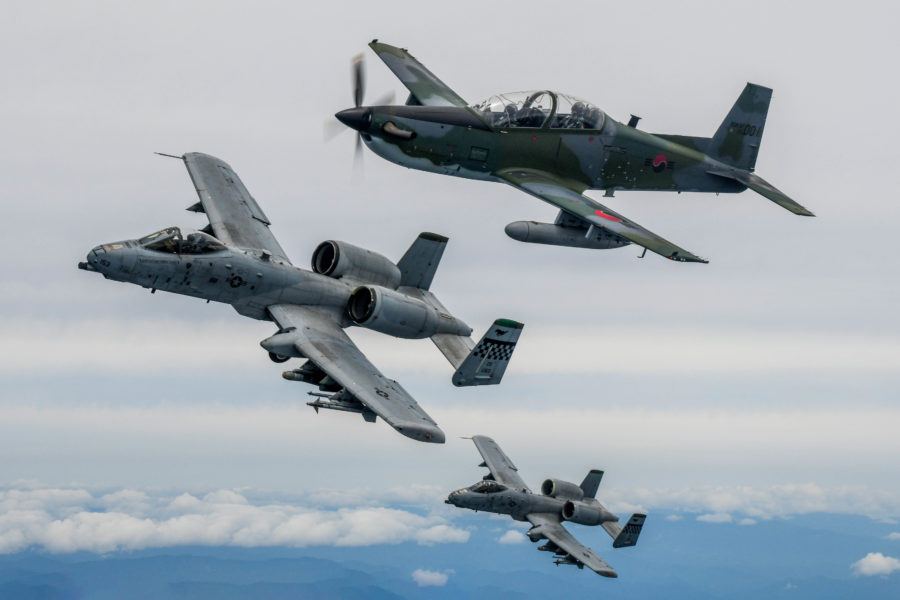Fighters, tankers, airlifters, and ISR aircraft from every U.S. Air Force base in South Korea and Japan are flying in Exercise Vigilant Storm, the large joint aerial training event between the U.S. and South Korea happening this week—even as North Korea fires off record numbers of ballistic missiles.
All told, approximately 100 USAF aircraft are participating in Vigilant Storm, with the goal of “enhancing interoperability of our forces to work together to defend the Republic of Korea and our allies in the region,” Pentagon Press Secretary Brig. Gen. Patrick S. Ryder said Nov. 1.
A Pacific Air Forces spokesperson detailed to Air & Space Forces Magazine the following U.S. aircraft that will be involved in the exercise:
- F-16s from the 8th Fighter Wing, Kunsan Air Base, South Korea
- F-16s and A-10s from the 51st Fighter Wing, Osan Air Base, South Korea
- U-2s from the 5th Reconnaissance Squadron, Osan Air Base, South Korea
- F-15s and KC-135s from the 18th Wing, Kadena Air Base, Japan
- An E-3 from the 961st Airborne Air Control Squadron, Kadena Air Base, Japan
- F-16s from the 35th Fighter Wing, Misawa Air Base, Japan
- C-130Js from the 374th Airlift Wing, Yokota Air Base, Japan
In addition, the Navy is sending EA-18Gs, the Marine Corps is sending F-35Bs and F/A-18s, and the Army is participating with a variety of helicopters and the MQ-1 Predator drone.
The Republic of Korea Air Force, meanwhile, will fly F-35As, among other aircraft, and the Royal Australian Air Force has deployed a KC-30A aerial refueler, PACAF has said. The exercise began Oct. 31 and will run through Nov. 4.
PACAF’s list of participating aircraft does not include the B-1B bomber, a number of which the Air Force recently deployed to Guam as part of a Bomber Task Force mission, or A-10s from Moody Air Force Base also deployed to Guam.
The large number of aircraft participating in the exercise was “long scheduled,” Ryder said, but North Korea has treated it as a major provocation, with officials claiming it is preparation for an invasion and issuing veiled threats of a “terrible price” for the U.S. and South Korea, according to Yonhap news agency.
Those threats were followed by a barrage of 23 ballistic missiles Nov. 2, reportedly a record for a single day. One landed in an ocean “buffer” zone, less than 20 miles from the countries’ maritime border, according to the Associated Press.
The missiles resulted in air raid sirens and some South Korean civilians sheltering in underground bunkers.
In a statement, however, U.S. Indo-Pacific Command said the launches do not pose “an immediate threat to U.S. personnel or territory, or to our allies.”
“We are aware of the DPRK ballistic missile launches and are consulting closely with our allies and partners,” the statement reads. “While we have assessed that this event does not pose an immediate threat … the missile launches highlights the DPRK’s reckless behavior and the destabilizing impact of its unlawful WMD and ballistic missile programs. The U.S. commitments to the defense of the Republic of Korea and Japan remain ironclad.”
Still, South Korea responded to the missile launches by having fighter jets fire three air-to-surface, precision-guided missiles in an exercise, according to its ministry of defense.
